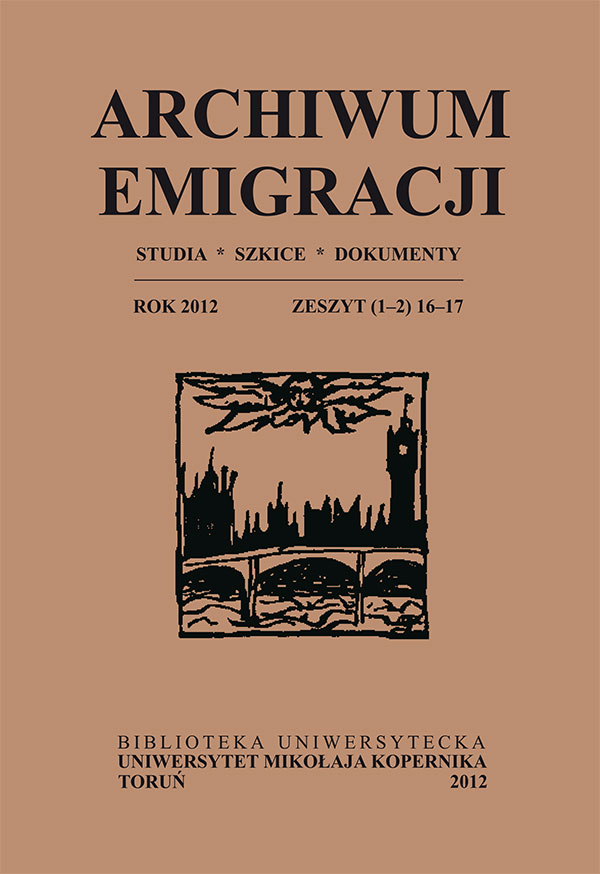THE CONTROVERSY ARISEN BY THE PRISONERS IN BRZEŚĆ ATTITUDE AS SEEN IN THE LIGHT OF THE CORRESPONDENCE BETWEEN ADAM CIOŁKOSZ AND STEFANIA SIGALINA-LIBERMANOWA FROM YEAR 1942
DOI:
https://doi.org/10.12775/AE.2012.017Keywords
anti-government opposition after 1926, political emigration, Brześć prisoners, controversiesAbstract
Between the World War I and the World War II many controversial political events took place. One of those events was the so called “Brześć issue.” It concerned the arresting, imprisonment and trial of the anti-government Opposition leaders after 1926. In the group of “Brześć prisoners” were A. Ciołkosz and H. Lieberman. These two convicted politicians had two choices; either stay in Poland and go to prison or emigrate and live abroad. These discrepancies could be found in the correspondence between A. Ciołkosz with H. Lieberman’s wife S. Sigalina- -Liberman in 1942 during his emigration in London.
Downloads
Published
2012-12-01
How to Cite
1.
PASZKIEWICZ, Lilla Barbara. THE CONTROVERSY ARISEN BY THE PRISONERS IN BRZEŚĆ ATTITUDE AS SEEN IN THE LIGHT OF THE CORRESPONDENCE BETWEEN ADAM CIOŁKOSZ AND STEFANIA SIGALINA-LIBERMANOWA FROM YEAR 1942. The Archives of Polish and East European Emigration. Online. 1 December 2012. pp. 211-232. [Accessed 7 July 2025]. DOI 10.12775/AE.2012.017.
Issue
Section
HISTORY
Stats
Number of views and downloads: 547
Number of citations: 0



